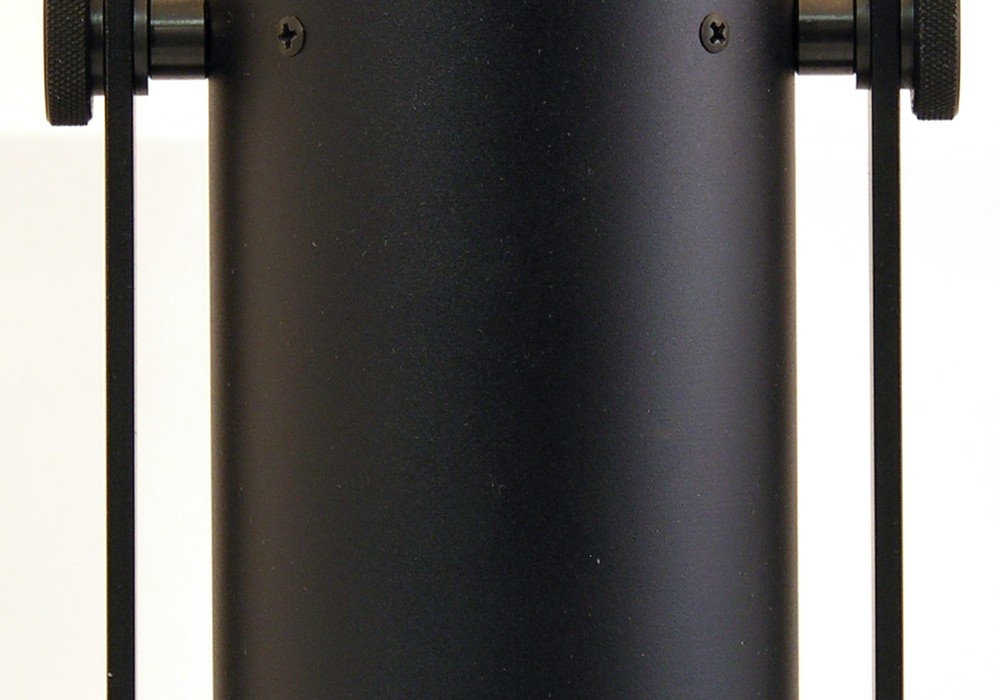From the moment I started using Mojave's large diaphragm condenser MA-50 mic, it sounded great on everything. There are many budget mics in the $200 to $300 price range, but the MA-50 is certainly worth spending a little extra on. It's a great starter mic, or a smart upgrade, and will add that "Mojave tone" to your mic locker. Plus, it sounds like mics that cost twice as much.
Unlike other Mojave condenser mics, the MA-50 is transformerless. It employs the same one-inch diameter, gold-sputtered diaphragm as the MA-201fet [Tape Op #70] and the MA-200 [#55], making it an excellent entry to the Mojave line. Features worth mentioning are a fixed cardioid polar pattern, high SPL handling (max 125 dB without distortion), and excellent off-axis rejection. These last two features came in handy for tracking drums, plus cutting acoustic instruments and vocals live at my small project studio. The MA-50 comes with Mojave's standard mic case and shock mount.
What I liked about the MA-50 is that it delivers warmth, depth, and clarity, especially on low-end sources such as kick drum and bass. I used the MA-50 on a drum session and mic'd the beater side in close proximity. The result was round and bouncy – perfect for the track I was producing – and I preferred it to the internal dynamic mic in the kick drum that was heavier on the attack. I also tried the MA-50 as a mono overhead. I would love to have had a pair of these to record drums, but as a mono overhead the MA-50 does the trick. I assume stereo mic'ing would sound awesome.
Now for the surprise – I really like this mic on upright bass! I am a career bassist, and often agonize over recording myself on upright much in the way a vocalist will pick apart their vocal tone. Not with this mic! My upright has strings that are way beyond the need for changing, but that's my sound for live performance so I have delayed changing my strings for a long time. Thus, I need a mic that can pull out the low-end punch and add mid-range clarity to the instrument. The MA-50 did it right away. I placed the mic above the bridge at about the end of the fingerboard and bam – instant tone!
This mic also sounds great on bass amps, even at close range. For recording electric bass I tracked a DI out of the amp, as well as mic'd the cabinet at close proximity with the MA-50, keeping it at low volume. The sound of the mic was similar to the sound of the DI and the amp in the room, creating a transparent tone but with a touch more body and warmth than the DI. I didn't even use the DI track for mixdown, which is rare for me.
Tracking with vocals was clear and round, especially through a tube preamp. If I am using a condenser for a vocal mic, I typically run it through a Universal Audio 610 [Tape Op #47] or something similar, so I can add a little tube drive as desired. For vocalists with harsh midrange notches in their voice this can be preferred over using a tube mic, which I find can magnify these undesirable vocal frequencies. Even if you love your tube mic for vocals, an MA-50 would be a useful, and often used, alternative. What attracts me most to this microphone is its versatility. Some mics – large or small, cheap or expensive – just can't handle more than a few source types with decent character. The MA-50 does it with ease, and without too much time spent chasing the tone. Mojave touts the MA-50 as perfect for home recording, which it is, but I would go further and say that it is perfect for recording anywhere.
Microphone designer David Royer went on a mission to create an affordable, transformerless large diaphragm microphone that would outperform more expensive mics of the same ilk. I think he achieved something special, one that holds its own among the best mics out there.





_disp_horizontal_bw.jpg)